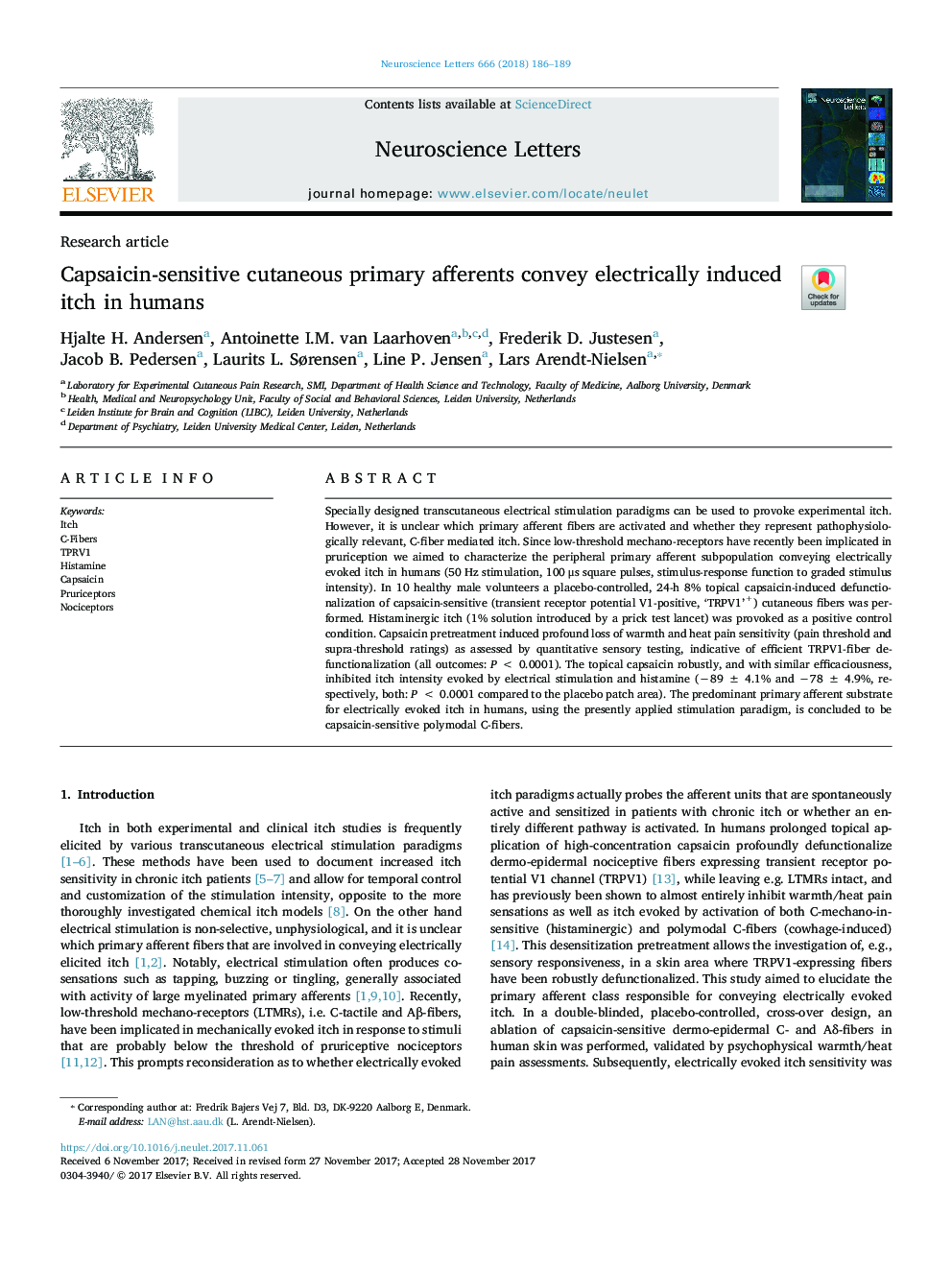| Article ID | Journal | Published Year | Pages | File Type |
|---|---|---|---|---|
| 8841837 | Neuroscience Letters | 2018 | 4 Pages |
Abstract
Specially designed transcutaneous electrical stimulation paradigms can be used to provoke experimental itch. However, it is unclear which primary afferent fibers are activated and whether they represent pathophysiologically relevant, C-fiber mediated itch. Since low-threshold mechano-receptors have recently been implicated in pruriception we aimed to characterize the peripheral primary afferent subpopulation conveying electrically evoked itch in humans (50 Hz stimulation, 100 μs square pulses, stimulus-response function to graded stimulus intensity). In 10 healthy male volunteers a placebo-controlled, 24-h 8% topical capsaicin-induced defunctionalization of capsaicin-sensitive (transient receptor potential V1-positive, 'TRPV1'+) cutaneous fibers was performed. Histaminergic itch (1% solution introduced by a prick test lancet) was provoked as a positive control condition. Capsaicin pretreatment induced profound loss of warmth and heat pain sensitivity (pain threshold and supra-threshold ratings) as assessed by quantitative sensory testing, indicative of efficient TRPV1-fiber defunctionalization (all outcomes: P < 0.0001). The topical capsaicin robustly, and with similar efficaciousness, inhibited itch intensity evoked by electrical stimulation and histamine (â89 ± 4.1% and â78 ± 4.9%, respectively, both: P < 0.0001 compared to the placebo patch area). The predominant primary afferent substrate for electrically evoked itch in humans, using the presently applied stimulation paradigm, is concluded to be capsaicin-sensitive polymodal C-fibers.
Related Topics
Life Sciences
Neuroscience
Neuroscience (General)
Authors
Hjalte H. Andersen, Antoinette I.M. van Laarhoven, Frederik D. Justesen, Jacob B. Pedersen, Laurits L. Sørensen, Line P. Jensen, Lars Arendt-Nielsen,
